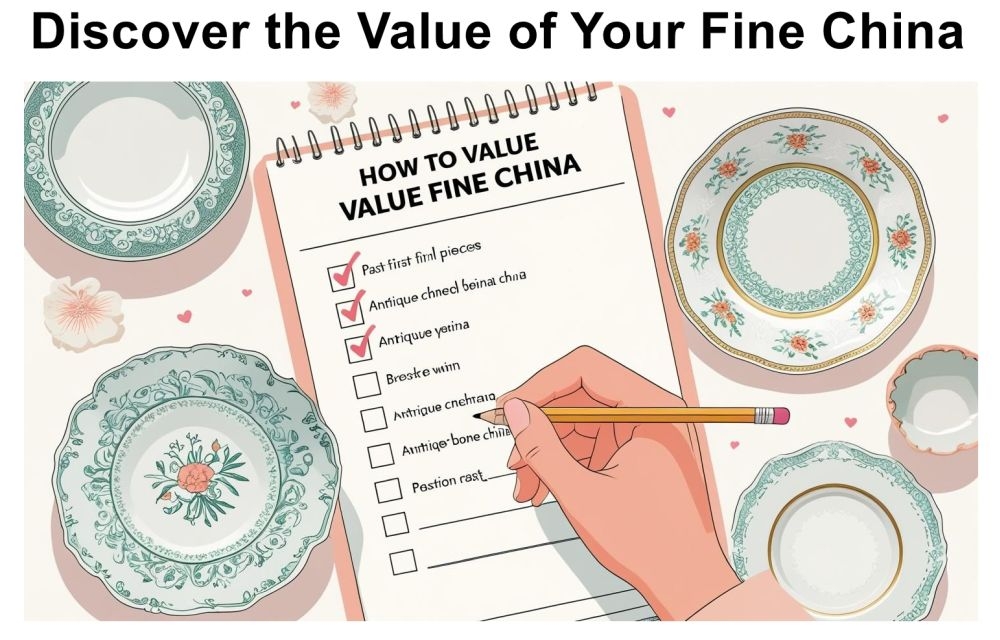Porcelain Marking X and 1 - Could Be Bristol or Crown Derby?
by Bianca A
(Toronto, On, Canada)
Porcelain Marking X and 1 - Could Be Bristol or Crown Derby?:- We inherited a set of dishes that were from my great grandmother. The only markings on the dishes are a X and the number 1 painted in gold.
The only thing we know are as follows:
- the dishes were from Britain
- apparently there were only 3 sets in Canada at one time
- Birks (canadian equivalent of Tiffany's) wanted to buy them from my grandmother.
- my mother was told that the dishes were Crown Derby
- apparently the markings of the factory were later two fishes?
The dishes are porcelain, with redish flowers and black leaves. Gold hand painted gilding on the leaves and edges.
Is this from the Bristol factory?
Any help would be greatly appreciated.
Bianca
===================================
reply by Peter (admin) below - just scroll down...
 |
Reply by Peter (admin)
To:- Porcelain Marking X and 1 - Could Be Bristol or Crown Derby?
Hi Bianca
This is a very interesting submission and a great contribution to this site, thank you. You have done a great job in uploading the pictures. My only criticism is you should have taken the mark picture on 'macro' setting and really blown it up so we could see it properly. As it is, we are a little bit in the dark as the mark has come out so small and blurred.
OK, having said that, it looks like you do have something old and possible of value. Identifying old antique fine china like this is very much the territory of specialist antiquarians (those Roadshow types you see on TV).
However, armed with several encyclopedias, I can talk you around the possibilities. Remember I am NOT an expert in this area.
Let's begin with the crossed lines. Old china with hand painted crossed lines are excruciatingly difficult to identify for the non-expert. Why?.....
Almost all makers of the new 18th Century craze for hard paste porcelain used crossed lines or swords in 'homage' to the great Meissen works in Germany. Meissen discovered the secret of real Chinese felspathic porcelain in 1710. The first Europeans ever to do so. There was a rush to follow suit all over Europe and join the 'white gold rush'.
By the late 1700's there were several British firms emulating Meissen and making hard paste, all using crossed lines on their marking systems - including Royal Crown Derby and Bristol.
I am not sure where you got the information about the Crown Derby having two fishes as a mark. I have 5 pages of marks of Crown Derby and no fishes in sight. In fact, only a small number of makers ever used fish devices - about 6 in all - none of them Derby to my knowledge.
Crown Derby did regularly use crossed lines but normally in association with a crown device and the letter 'D'. At one time (1785 - 1825) they were known to use a mock Meissen crossed swords device (without a crown or a 'D') along with a dot in between the two hilts. However, I can't see your mark clearly enough to know whether or not it resembles this device or not. They also did mock Sevres marks, mock Ludwigsburg marks and mock Frankenthal marks. However, these were thought often to be done when they were making china replacements for broken sets for clients.
Getting on to the Bristol factory. This factory has very old roots, going back to 1750. There would only be a very rare chance your dishes were Bristol. Most items would be in museums not anonymous within family inheritances (maybe we have a 'Roadshow' moment here - but maybe not. Let's not get over excited!).
However, that said, a mark very similar to yours (crossed lines with the number 1) was used between 1770 and 1781. The factory only made real porcelain (hard paste) between 1778 to 1781.
In other words, in an eight year period from 1770 to 1778 wares showing that mark would have been soft paste rather than hard paste porcelain. For a four year period from 1778 to 1781, the wares with that mark could have been either hard or soft paste. One of your first jobs is to work out whether your dishes are hard porcelain or soft.
If they are hard paste for example, and, on inspection of a decent photo, the mark can be identified as possibly a Bristol device, then you have narrowed down the date to likely 1778 to 1781.
Hope this helps.
Best regards,
Peter (admin)
p.s. The following page is a 'must see' if you are researching fine china - for value and identification:-
Researching the identity and value of antique and vintage fine china.
Comments for Porcelain Marking X and 1 - Could Be Bristol or Crown Derby?
|
||
|
||

Inherited a china set?... Download my free 7-point checklist to instantly assess its potential value.
From the Studio
• Peter Holland Posters
• Sculpture Studio

